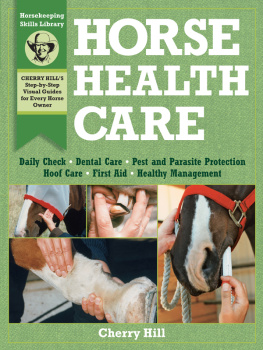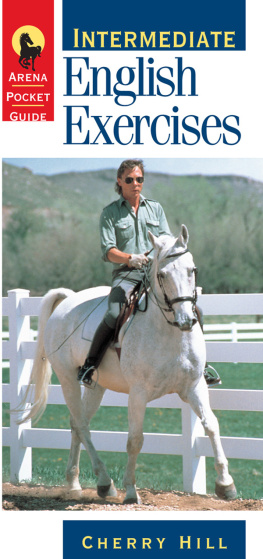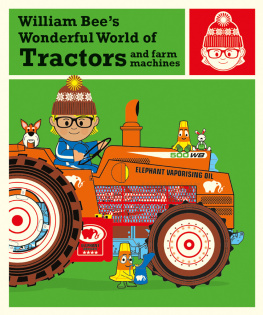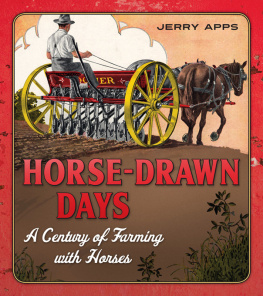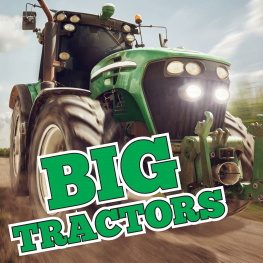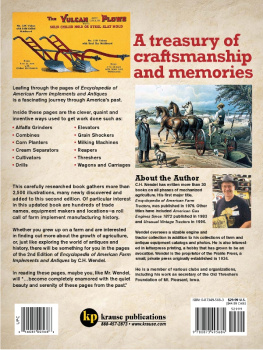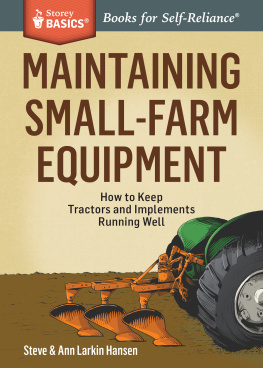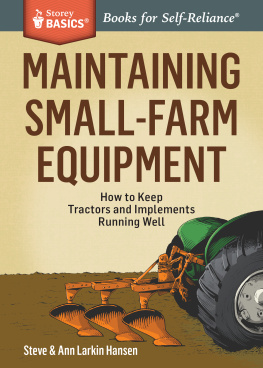Appendix A: Driving Tips
SAFE DRIVING
Driving a large rig can be intimidating at first, but the best way to become a better trailer driver is to practice. If you have a level field at home, set up a course of cones or plastic barrels or buckets to maneuver around. When you feel confident with your skills at home, take your empty trailer to a parking lot to practice. During the week, church parking lots can provide open level playing fields for your trucker school drills. You might also try the local high school parking lot on weekends or a big department store lot during off-hours.
Eventually, youll want to put a little pressure on yourself and practice maneuvering between cones in a quiet section of a parking lot during business hours. Youll be glad you did the first time you have to park your trailer in a tight space at a horse show or a vet clinic. It is far better to crunch a few cones in the grocery store parking lot than it is to smash into someone elses trailer at a show.
If you are new to trailering and are hesitant to take on the responsibility, dont worry. Confidence comes with experience. Before you start driving your own rig, go along with a competent seasoned hauler a few times to get a feel for the whole thing. Whether you are taking a practice trip or hitting the road for real, always bring someone with you, making sure it is a person you can rely on to assist you in case of emergency. Sometimes having the wrong person along can fluster you and undermine your confidence. The right traveling companion gives you a great feeling of teamwork and confidence, which usually means a safer trip.
Using Your Mirrors
While you are driving, learn to use your side view mirrors to check behind you for approaching traffic or trailer doors that might have come unlatched. Since you will often be traveling at a slower speed than passenger cars, you should always be on the alert for cars coming up behind you to pass. Adjust your mirrors so you can see alongside and behind your trailer. When passing, use your mirrors to be sure that your trailer is well clear of the vehicle you passed before you start to pull back in front of it.
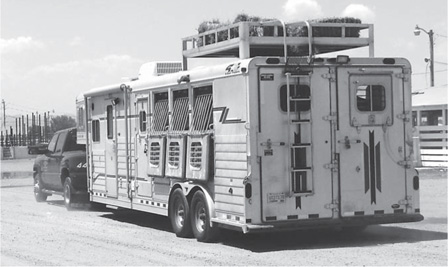
Operating a truck and large rig takes some practice, so before you head out on a long trip, do some turning and backing in an empty parking lot.
Have your spouse or a friend help you practice. When an assistant is helping you to back up or maneuver your trailer, it is his responsibility to be sure he can see you and you can see him in your side mirror at all times. Ask your helper to pay special attention to this, because it is very difficult for the driver to safely navigate while turning around to look for a helper. Also, the signal for stop is pretty universal, but those for turn left, turn right, a little bit more, or a lot more can all look quite similar to the driver. Make some specific signal arrangements ahead of time and avoid a crunch or divorce court!
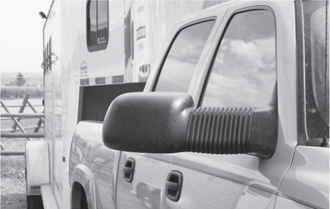
Trailer mirrors extend out to the sides more than normal truck mirrors to give the driver better peripheral vision.
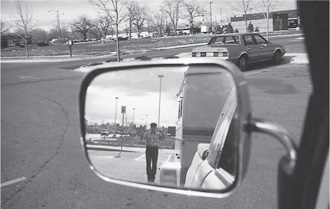
When backing into a tight spot, having someone guide you can be helpful.
Backing up a Trailer
Are you backlexic when it comes to maneuvering your trailer in reverse? At first, backing up can be very confusing, but with experience it will become second nature. The most important thing is to take your time. There is never any hurry when you are driving a rig and especially not when you are backing up. Dont hesitate to get out of the truck and walk around to see where you are trying to place your trailer. That often gives you a visual goal and allows you to see how much space you have and what obstacles might be in the way. If the mirrors are really confusing you, its perfectly fine to turn around and look out the window.
When you are backing up a trailer, keep the following in mind: If you want the trailer to go to the left, the rear end of your truck must go to the right. That means you turn the steering wheel to the right (clockwise). You do this while looking in a mirror, which makes your brain do another left-right switch. If you are still having trouble knowing which way to turn the steering wheel, use the following tips.
Put your hand in the center of the bottom of the steering wheel. If you want the back of the trailer to move to the left, move your hand to the left.
If you want the back of the trailer to go to the right, move your hand to the right.
For a sharp turn, turn the steering wheel before you press the accelerator.
For a gradual turn, turn the steering wheel and press the accelerator at the same time.
Once the trailer is going in the direction you want, you need to straighten out the truck wheels to have your truck follow the trailer.
On your first trip to the parking lot practice area, set up a situation that requires you to back straight into an alley of cones or use the painted lines on the parking lot as guidelines.
Then set out a single cone and use it to become familiar with the turning radius of your rig as it moves forward. First turn to the left around the cone, keeping a close eye on it. Remember, the longer your rig, the more the rear wheels of your trailer will cut inside the track of your truck. Because goosenecks are hinged so far forward on the truck, the trailer tends to cut the corner and so requires a wider turn than a straight-pull.
Then use the cone to practice turning right. This is harder, as the cone is more difficult to keep track of in the right mirror. If you lose sight of the cone, it might be mashed the next time you see it!
Return to the backing exercises, this time incorporating turning along with the backing. Whenever possible, set up the situation so that you are backing with the bend in your rig on the drivers side where you can better see what is happening. However, eventually you will have to learn to back from the right where you are backing the trailer into a blind spot. Start out giving yourself plenty of room and make a large sweeping turn backward until you get lined up. Alternately looking in your mirror and out the back window might help or it might confuse you experiment with what feels comfortable.
If you find that you turned too late and have overshot your target, it is better to pull far enough ahead to straighten out completely and try again. When making an adjustment, dont overcompensate. If you begin to jackknife (making such a sharp angle that your trailer might crunch the back corner of your truck), stop immediately and try again.
Swaying or Fishtailing
Its likely that at some point during a trip youll feel the trailer swaying from side to side. Swaying is more common with a straight-pull trailer than with a gooseneck. Swaying can be caused by many things: a flat tire, low air pressure on truck or trailer tires, an unbalanced load (usually because the trailer is too heavy towards the rear), a too-heavy trailer, too much speed (especially downhill), moving horses, wind gusts or turbulence from passing trucks, irregular or washboard road, and poor wheel alignment or balance.
Gentle swaying can usually be controlled by simply keeping the tow vehicle straight, letting up on the accelerator, and gradually slowing down. If your trailer sways regularly, stop and check the tires and make sure your horses arent scrambling around. Rebalance your load if necessary by moving items from a rear tack room, for instance, to a front compartment.


